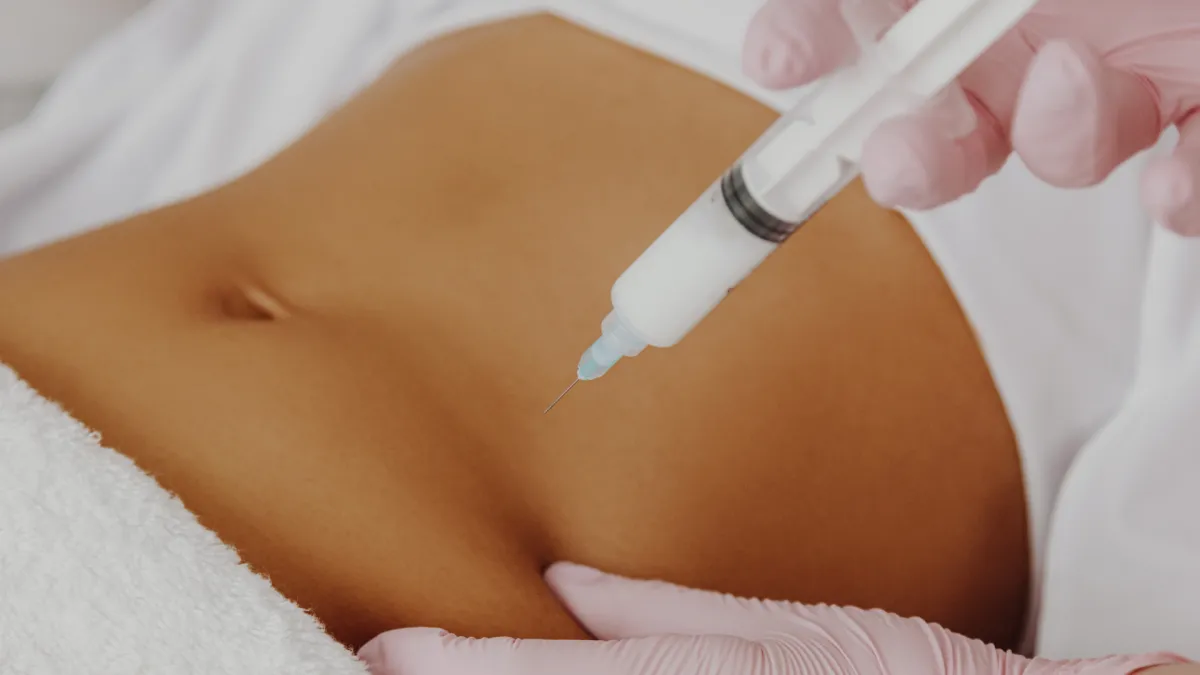Lipolysis Injections in 2025 – Are They Still Safe?
Curious about lipolysis injections in 2025? See how they work, their safety, and what’s new in fat-dissolving treatments.
What Are Lipolysis Injections?
Lipolysis injections are non-surgical treatments designed to break down fat cells in targeted areas of the body. They’re often used for small, localized pockets of fat that do not respond well to exercise or diet alone. The process involves injecting compounds—typically a blend of phosphatidylcholine and deoxycholic acid—into the subcutaneous fat layer.
Once injected, the solution works to disrupt the fat cell membrane, leading to cell breakdown. The body then clears the released fat through natural metabolic processes over time.

How Have Lipolysis Injections Evolved by 2025?
By 2025, advancements in formulation and technique have improved both the comfort and precision of lipolysis treatments. Key developments include:
Improved Compound Stability:
Newer blends offer more consistent absorption rates.
Minimized Downtime:
Enhanced protocols reduce swelling and inflammation post-treatment.
Refined Injection Techniques:
More precise targeting has decreased the risk of uneven outcomes.
Wider Range of Target Areas:
Beyond the chin and abdomen, areas like the arms, thighs, and flanks are now more commonly treated.
These updates aim to improve the experience while maintaining a similar safety profile to earlier versions.
What Does the Procedure Involve?
The process usually follows this sequence:
1. Consultation and Mapping:
An evaluation to identify fat deposits and mark treatment areas.
2. Numbing:
Topical numbing or local anesthesia is applied to minimize discomfort.
3. Injection Phase:
Small amounts of solution are injected across the marked area using a fine needle.
4. Post-Treatment Monitoring:
Immediate care includes cold compresses and instructions for aftercare.
Most sessions last 30–45 minutes. Depending on the treatment area and desired outcome, multiple sessions may be scheduled.
Is the Safety of Lipolysis Injections Still a Concern in 2025?
Safety remains a primary focus in cosmetic procedures. As with any injectable treatment, lipolysis injections come with potential risks. In 2025, reported complications have not significantly increased, but awareness and monitoring continue.
Common side effects may include:
Swelling or redness at injection sites
Bruising
Tenderness or mild pain
Temporary numbness
These typically resolve within a few days to a week. Rare side effects like tissue damage or nerve injury are now more preventable with improved protocols and proper patient screening.
Who Is a Suitable Candidate for Lipolysis Injections?
This treatment may be suitable for individuals who:
Have localized fat deposits
Are not seeking full-body weight loss
Prefer non-surgical methods
Have realistic expectations about outcomes
It is not intended for those with obesity or for weight management purposes. Suitability is often determined by physical assessment and medical history review.
Typical Session Estimates by Body Area
Treatment Type
Invasiveness
Target Areas
Downtime
Lipolysis Injections
Minimal
Small, defined
Slow to moderate
Cryolipolysis (Fat Freezing)
Minimal
Larger zones
Low
RF-based Fat Reduction
Non-invasive
Surface smoothing
Low
Laser Lipolysis
Minimally invasive
Small to medium zones
Moderate
What Do People Typically Expect From Lipolysis Injections?
Most people undergo lipolysis injections with the goal of refining specific areas such as:
Submental (double chin) fat
Lower abdomen bulges
Inner or outer thighs
Upper arms
Bra or back fat
Visible results typically appear over several weeks as the body gradually processes the dissolved fat. For full results, two to four sessions may be recommended, spaced a few weeks apart.
Post-Treatment Experience: What to Watch For
Recovery has become more manageable due to updated practices. Still, individuals should be prepared for:
Temporary swelling or puffiness
Slight firmness or sensitivity under the skin
Minor bruising at the injection sites
Applying cold compresses and avoiding vigorous physical activity for a couple of days may help ease discomfort.
Long-term side effects remain uncommon, but it’s important that any unusual pain, prolonged swelling, or skin irregularities are reported promptly.
How Practitioners Maintain Safety Standards
Safety protocols in 2025 emphasize:
Thorough Consultation:
Health history, allergies, and skin type are reviewed before treatment.
Anatomical Precision:
Technicians are trained to avoid critical structures such as blood vessels and nerves.
Sterile Technique:
Clean equipment and skin preparation reduce infection risk.
Post-Care Instructions:
Clear aftercare guidance supports healing and optimal results.
These measures collectively contribute to maintaining a high standard of care.
What Are the Limitations of Lipolysis Injections?
While effective for certain areas, there are limits:
Not a weight-loss solution
Cannot tighten skin:
It does not address skin laxity.
Requires patience:
Visible changes are gradual.
Not suitable for large areas:
Larger volumes of fat may respond better to other methods.
Understanding what the treatment can and cannot do helps ensure appropriate expectations.
2025 Trends in Fat Reduction Treatments
In 2025, the demand for non-surgical contouring remains strong. People continue to seek subtle, low-downtime enhancements. Key trends this year include:
Combination Therapies:
Lipolysis paired with skin tightening or lymphatic drainage.
AI-Guided Mapping:
Smart devices map the treatment zone for even application.
Micro-dosing Techniques:
Using lower volumes per area to reduce side effects.
Treatment for Male Clients:
Growing interest in refining areas like the jawline and flanks.
Lipolysis continues to hold a spot in this evolving treatment landscape.
How Long Do the Results Last?
Results from lipolysis injections are generally long-lasting because fat cells, once destroyed, do not regenerate. However, if weight is gained after treatment, remaining fat cells in the area can expand. That’s why maintaining stable body weight is a key factor for lasting outcomes.
Touch-up sessions may be scheduled in some cases if the initial results are subtle or if fat redistribution occurs.
Summary
Lipolysis injections remain part of the 2025 cosmetic treatment spectrum. Though the procedure has evolved, its core principles stay the same: breaking down targeted fat cells using injectable solutions. Safety measures, improved techniques, and client education are key factors in maintaining a favorable safety profile.
While it’s not suitable for all body types or goals, lipolysis injections continue to be a tool for refining small, stubborn areas—especially for those looking for a non-surgical option.
Location: Blk 2 Bukit Batok Street 24 #08-03 Skytech Building , Singapore Singapore 659480
Call 9788 6162
Email: [email protected]
Site: www.chrysalis.com.sg

Disclaimer:
Content and articles and this website do not represent the brands "Juvelook" or "Lenisna" and
is for informational purposes only and should not be considered medical advice. While we strive to provide accurate
and up-to-date information, all opinions expressed in our articles reflect the views of the authors and should not be taken
as professional medical guidance. Any factual claims are properly cited from reputable sources.
Readers are encouraged to consult qualified medical professionals before undergoing any aesthetic treatment.
